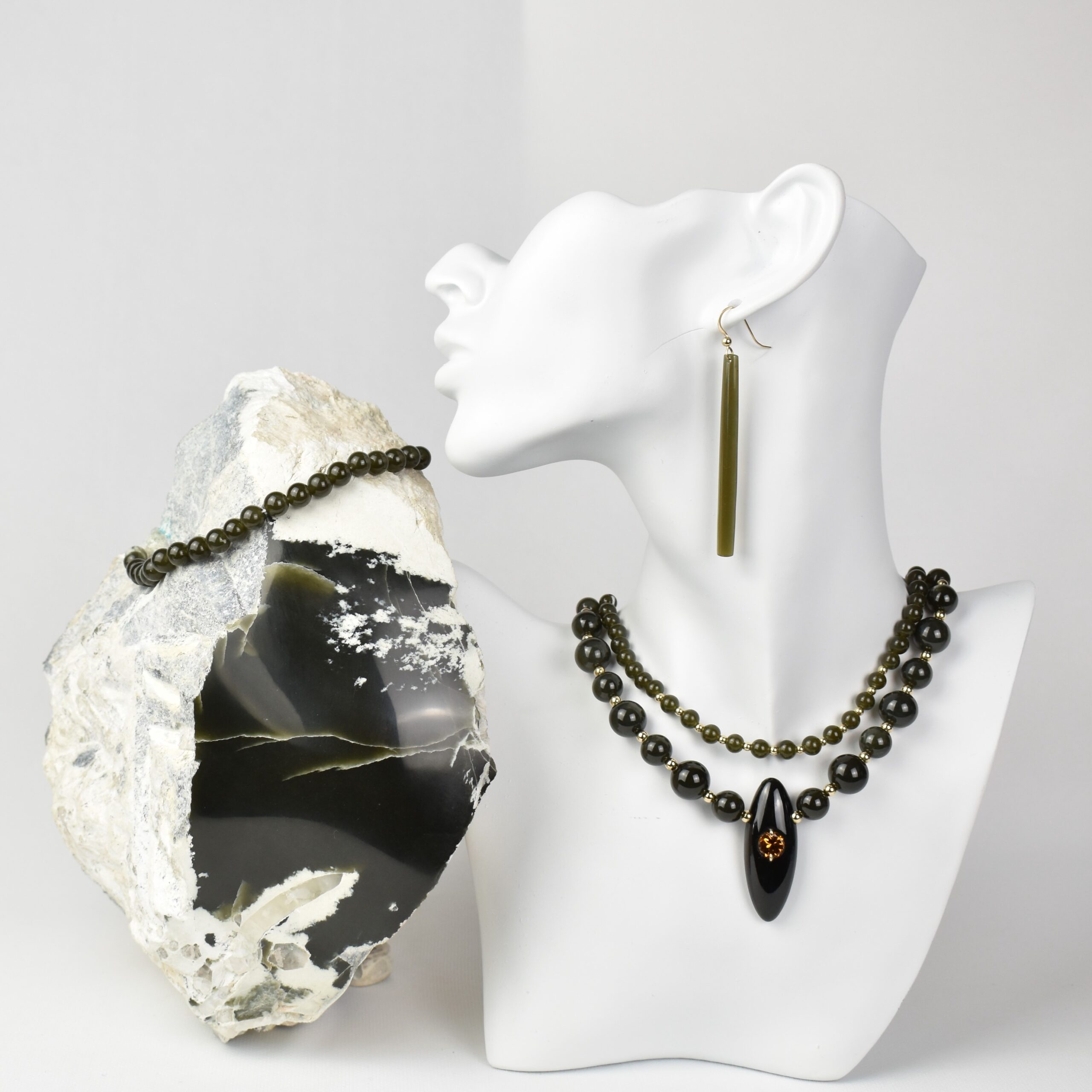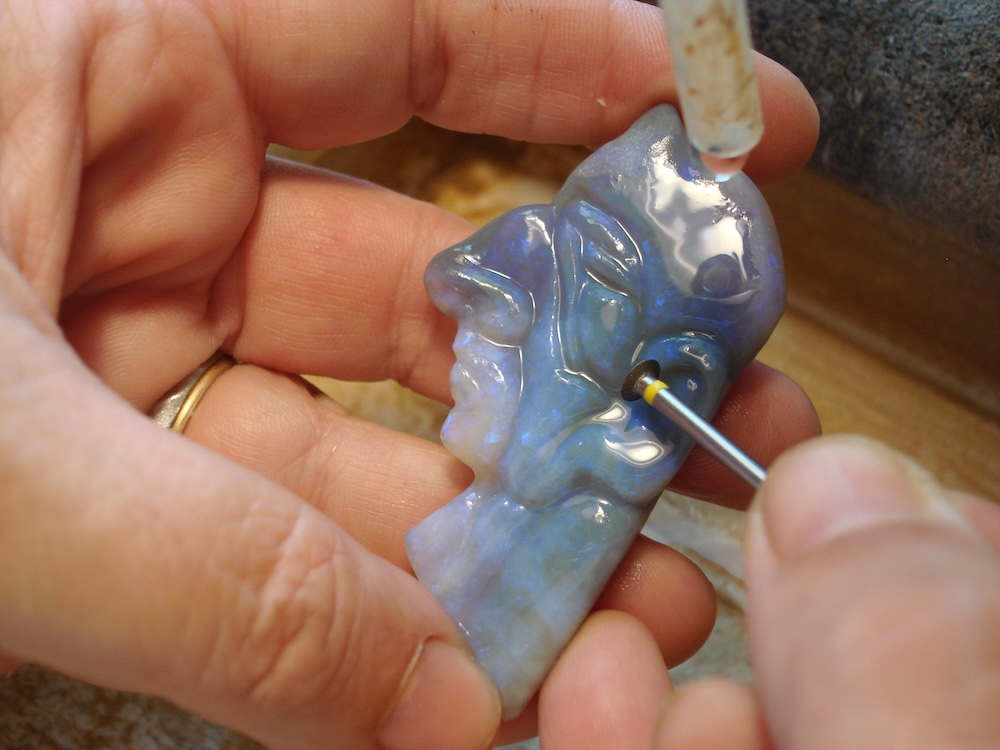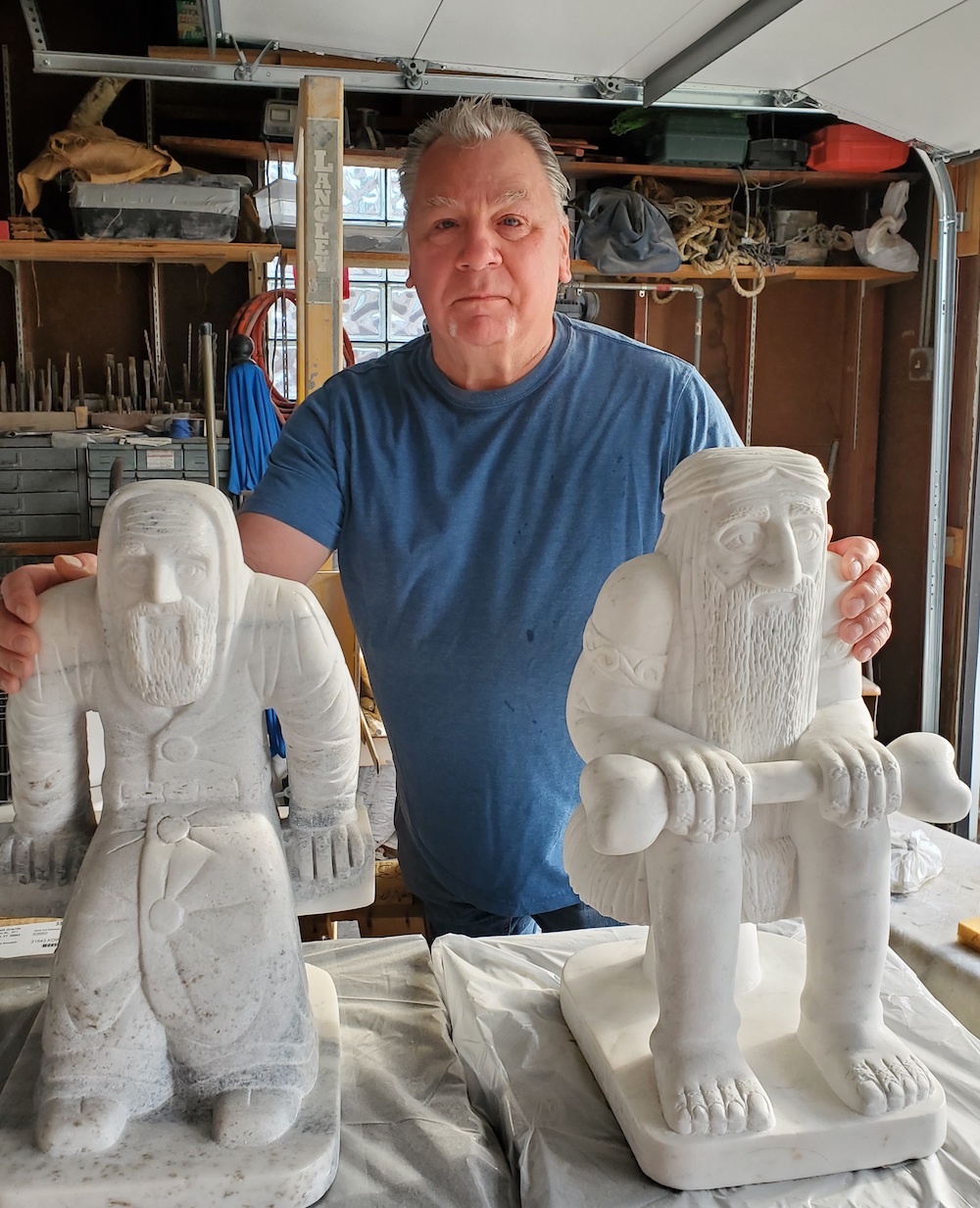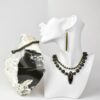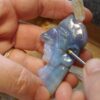Snuff bottles are containers for snuff, a type of powdered tobacco mixed with aromatic herbs. Snuff was initially stored in small boxes in Europe. Snuff was introduced into China by European missionaries in the mid-17th century and gained its popularity in the 18th and 19th centuries. Chinese switched to using small bottles with narrow necks and caps attached with tiny spoons to keep the snuff powder dry and preserve the aroma. As handheld objects, snuff bottles were also treated as fertile ground for craftsmen’s artistic creativity and their users’ personal expressions.
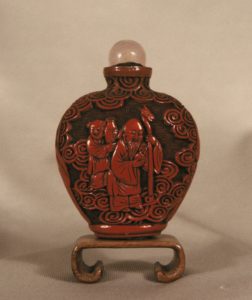
Snuff bottles range widely in their materials, colors, and decorations, as exemplified in the Lizzadro Museum collection. The cinnabar snuff bottle (left) is an example of the sophisticated art of lacquer, the resin of a family of trees found in South China. Hardening when exposed to oxygen and humidity, lacquer was tinted with cinnabar and then applied in multiple layers onto wood to a substantial thickness to enable carving through the layers. The decoration on this bottle shows Shouxing, the God of Longevity, holding a peach in his right hand and a staff in his left hand. The peach is a widely known symbol of immortality in Chinese art. A boy carries a vase behind him. The clouds surrounding them indicate their celestial status.
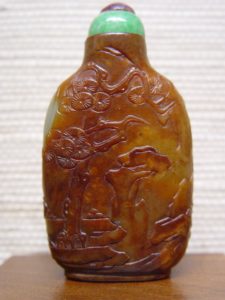
The decoration of this nephrite snuff bottle (right) features a pine tree and three garden rocks. Remaining green in harsh winters, the pine tree, also known as the gentleman of trees, has long been regarded as symbols of endurance and longevity in Chinese culture. The shapes of the rocks on this snuff bottle indicate scholars’ rocks often placed in imperial or private gardens in traditional China. The artist creates a harmonious miniature garden composition in this small space by horizontally laying out the rocks from the bottom to the right to balance the vertically thrusting pine tree on the left. This snuff bottle was most likely used by a scholar who showcased his social and cultural identity through the object in his ownership.
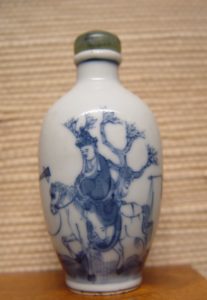
This blue-and-white porcelain snuff bottle (left) represents a scene from one of the most popular novels in China, The Journey to the West, first published in the 16th century. Although the Monkey King from the story is probably the best-known character, this photo shows the Monkey King’s master Xuanzang, who is based on an actual 7th-century Buddhist monk. He is riding a white horse on his way to the Western Paradise in search of the sacred Buddhist sutras. The uplifted reins of the horse and part of the carrying pole behind him indicate that this image is part of a continuous scene with three of Xuanzang’s disciples either leading the procession or following him.
The use of snuff declined in 20th-century China but snuff bottles remain one of the most appreciated collectibles around the world.

